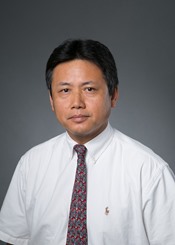Efficiency Improvement in Clinical Workflow by Commissioning a Supplemental Proton Machine Model with a Built-in Range Shifter
Z Su1*, W Hsi2, (1) University of Arkansas for Medical Sciences, Little Rock, AR, (2) University Of Florida Proton Therapy Institute, Jacksonville, FL
Presentations
SU-H330-IePD-F4-5 (Sunday, 7/10/2022) 3:30 PM - 4:00 PM [Eastern Time (GMT-4)]
Exhibit Hall | Forum 4
Purpose: For proton center with multiple machine platforms, switching proton machines across the platform without re-optimization can greatly improve the clinical efficiency, when proton machines belong to different platforms. This study focused on machine switching efficiency between Proteus-1 and Proteus-plus platforms by modeling a Proteus-1 proton machine with built-in range shifter (P1RS) for direct recalculation of treatment plans between P1 and universal nozzle of Proteus-plus (P+US) systems.
Methods: For institutions with multiple platform proton machines (i.e., P+ to P1), re-planning is usually required if a patient needs to be moved from P+ to P1 machines due to their different spot sizes. This usually requires re-planning of the patient and creates significant time delay when one machine is down or overloaded. A P1 machine model was commissioned using a built-in range shifter (P1RS) at snout position of 45cm upstream from the machine isocenter. This model is a supplement to the regular P1 model for direct conversion of proton plans between P+US and P1RS. Ten breast treatment plans from P+US were recalculated using P1RS and dosimetric comparisons were performed between the plans.
Results: The P1RS machine model has similar in-air spot size as those of P+US (Figure 1). There are noticeable differences between the PDDs of the two models. For patient plan with field size less than 20cm by 24cm, preliminary investigation of direct conversion of treatment plans between the two machine models indicates that it is feasible. The dosimetric differences are noticeable but within clinical tolerance (Figure 2).
Conclusion: P1 model with a built-in range shifter can simulate a P+US system. Direct recalculation of treatment plan between the two systems is feasible with acceptable dosimetric differences and could increase machine switching capabilities and improve clinical flow efficiency.
Keywords
Taxonomy
TH- External Beam- Particle/high LET therapy: Proton therapy – computational dosimetry-Monte Carlo
Contact Email



